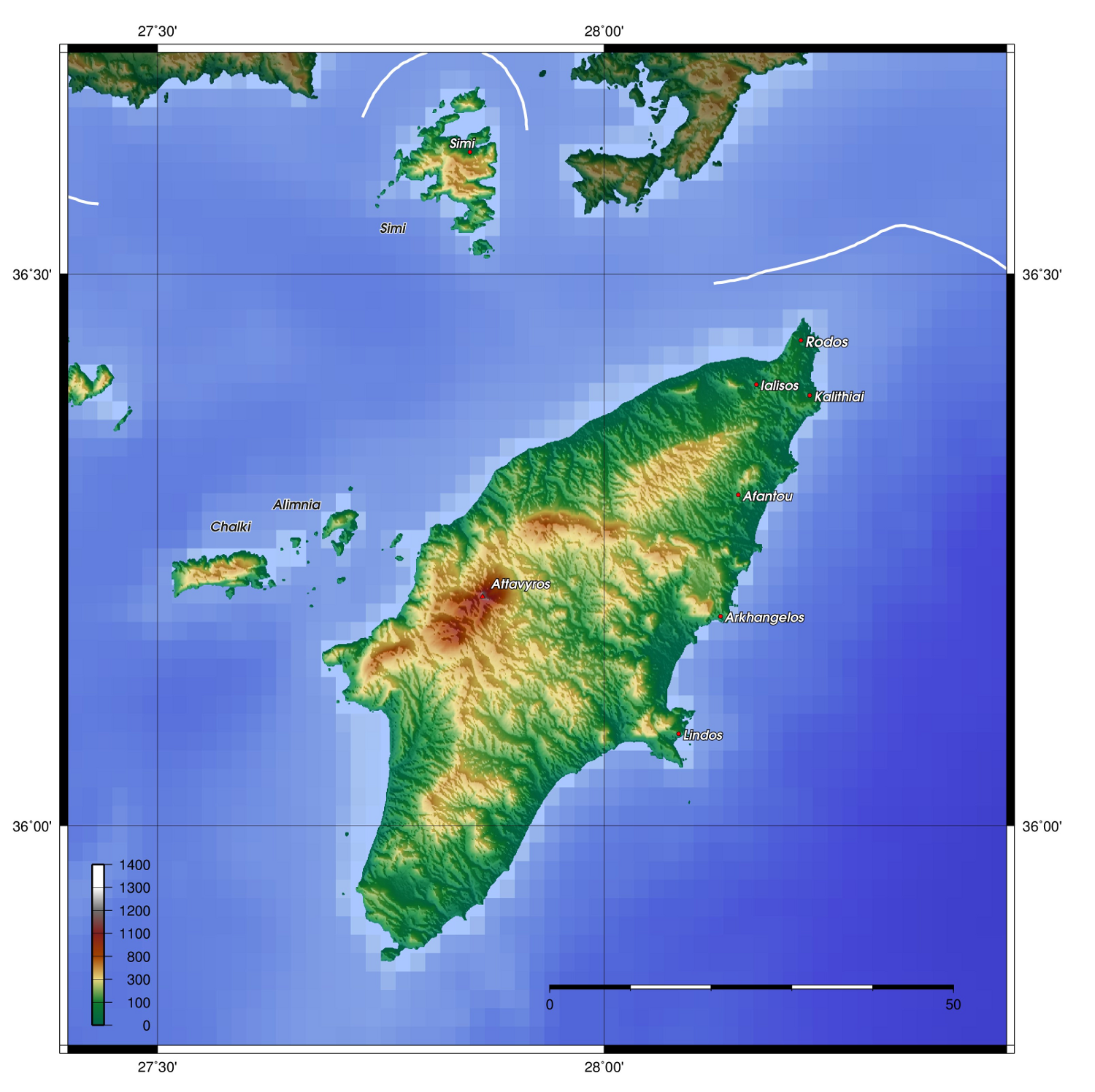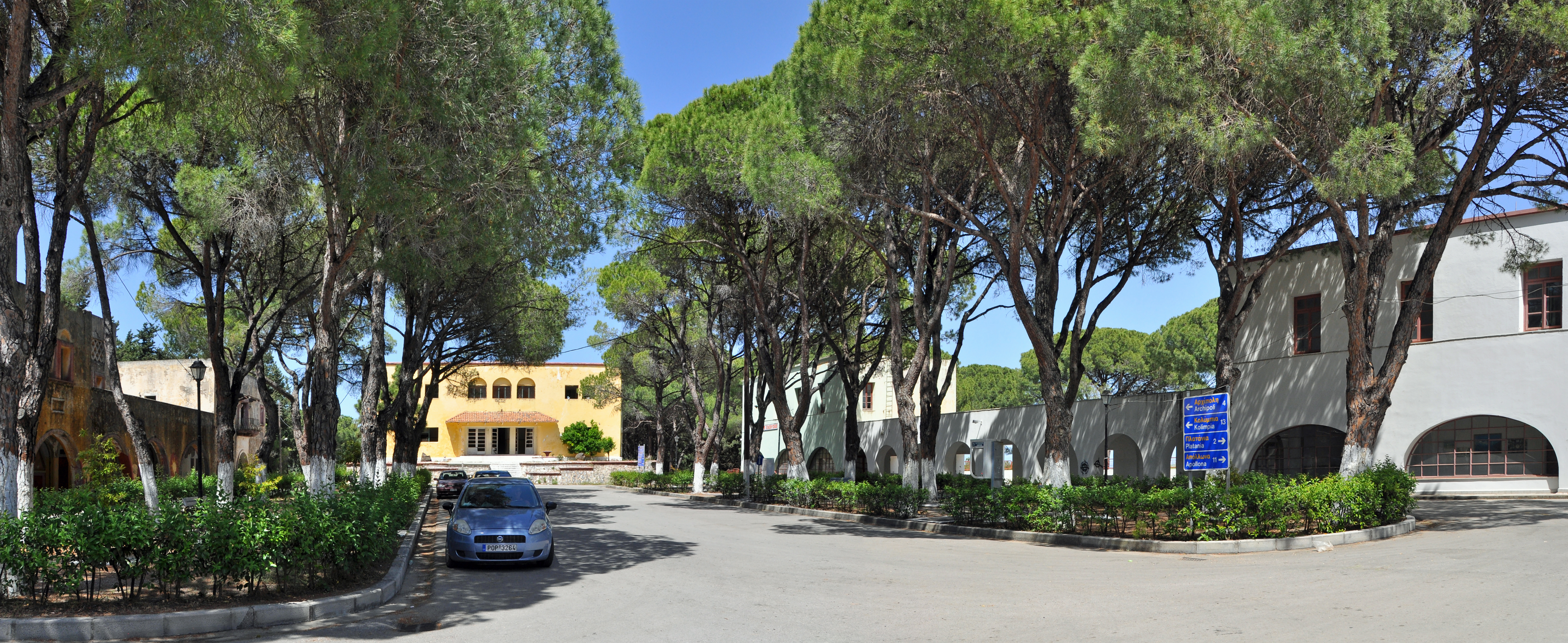Mount Prophitis Ilias on:
[Wikipedia]
[Google]
[Amazon]
 Mount Profitis Ilias is a mountain on the Greek island of
Mount Profitis Ilias is a mountain on the Greek island of
File:ProfitasIliasSensuLato.JPG, Fault-line cliff on Profitis Ilias. In the foreground are friable rocks of Middle Miocene-Pleistocene age.
File:ProfitisIliasLimestone.JPG, Fractured tectonic limestone by the path to Salakos. Middle Miocene-Pleistocene sediments on the plain below.
File:NatureMuseumPetaloudesGeology (4).JPG, Tectonic limestone on display at Nature Museum Petaloudes
File:Comperia comperiana.jpg, ''Himantoglossum comperianum''
 Near the summit and 8 km from Eleousa are Hotel "Elaphos and Elaphina" and the
Near the summit and 8 km from Eleousa are Hotel "Elaphos and Elaphina" and the
File:MussoliniHouseRodos.JPG, Mussolini's House
File:MussoliniHouseRodos (6).JPG,


Mediterranean Black Sea Flyway
{{coord, 36.2724, 27.9331, display=title Rhodes Mountains of Greece Landforms of Rhodes (regional unit) Mountains of the South Aegean
 Mount Profitis Ilias is a mountain on the Greek island of
Mount Profitis Ilias is a mountain on the Greek island of Rhodes
Rhodes (; el, Ρόδος , translit=Ródos ) is the largest and the historical capital of the Dodecanese islands of Greece. Administratively, the island forms a separate municipality within the Rhodes regional unit, which is part of the So ...
. It is named for the biblical Elijah.
Geology
Profitis Ilias is formed of uplifted fault blocks themselves a product of the Hellenide orogeny which produced a stack of Alpine nappes ofMesozoic
The Mesozoic Era ( ), also called the Age of Reptiles, the Age of Conifers, and colloquially as the Age of the Dinosaurs is the second-to-last era of Earth's geological history, lasting from about , comprising the Triassic, Jurassic and Cretaceo ...
age. These are part of the Pindos-Olonos series of low-grade metamorphic limestone sediments. The mountain overlooks Middle Miocene
The Miocene ( ) is the first geological epoch of the Neogene Period and extends from about (Ma). The Miocene was named by Scottish geologist Charles Lyell; the name comes from the Greek words (', "less") and (', "new") and means "less recen ...
-Pleistocene
The Pleistocene ( , often referred to as the ''Ice age'') is the geological Epoch (geology), epoch that lasted from about 2,580,000 to 11,700 years ago, spanning the Earth's most recent period of repeated glaciations. Before a change was fina ...
sedimentary basins. Sudden topographic variations and land instabilities are due to a multitude of thrust fault
A thrust fault is a break in the Earth's crust, across which older rocks are pushed above younger rocks.
Thrust geometry and nomenclature
Reverse faults
A thrust fault is a type of reverse fault that has a dip of 45 degrees or less.
If ...
s. Ophiolites, usually gabbro
Gabbro () is a phaneritic (coarse-grained), mafic intrusive igneous rock formed from the slow cooling of magnesium-rich and iron-rich magma into a holocrystalline mass deep beneath the Earth's surface. Slow-cooling, coarse-grained gabbro is che ...
occur.
Botany
Profitis Ilias is covered with forests of pines (''Pinus brutia
''Pinus brutia'', commonly known as the Turkish pine, is a species of pine native to the eastern Mediterranean region. The bulk of its range is in Turkey.
Turkish pine is also known by several other common names: Calabrian pine (from a naturalis ...
'') and cypress (''Cupressus sempervirens
''Cupressus sempervirens'', the Mediterranean cypress (also known as Italian cypress, Tuscan cypress, Persian cypress, or pencil pine), is a species of cypress native to the eastern Mediterranean region, in northeast Libya, southern Albania, sou ...
'') and maquis shrubland
220px, Low maquis in Corsica
220px, High ''macchia'' in Sardinia
( , , ) or ( , ; often in Italian; hr, makija; ; ) is a shrubland biome in the Mediterranean region, typically consisting of densely growing evergreen shrubs.
Maquis is char ...
. Notable are the Rhodes Paeony '' Paonia rhodia'' and ''Cyclamen rhodium
''Cyclamen rhodium'' (also called ''Cyclamen peloponnesiacum''; once included in '' Cyclamen repandum'') is a species of flowering plant in genus ''Cyclamen'' of the family Primulaceae, native to the Peloponnese, Rhodes, and southwestern Kos. It ...
''. The large parasitic orchid ''Limodorum abortivum
''Limodorum abortivum'', also known as Violet Limodore or Violet bird's-nest orchid, is a species of myco-heterotrophic, achlorophyllous orchid and is native to mainland Europe, western Asia and the Mediterranean
The Mediterranean Sea is a ...
'' grows in the pinewoods. Also notable are '' Ophrys ferrum-equinum'', the Profitis Ilias Bee Orchid ''Ophrys fuciflora
''Ophrys holosericea'', the late spider orchid, is a species of flowering plant in the family Orchidaceae, native to western and central Europe and the Mediterranean region. There has been considerable confusion about the identity of this species ...
'' ssp. ''oreas'' (found only here), '' Ophrys arachnites'' ssp. ''attica'', ''Ophrys lutea
''Ophrys lutea'', the yellow bee-orchid, is a species of orchid native to southern Europe, North Africa, and the Middle East, the range extending from Portugal and Morocco to Syria.
Description of the flower
Broad asymmetric lateral sepals, do ...
'', '' Ophrys oestrifera'' ssp. dodekanensis, ''Orchis italica
''Orchis italica'', the naked man orchid or the Italian orchid, is a species of orchid native to the Mediterranean Basin. It gets its common name from the lobed lip (labellum) of each flower which mimics the general shape of a naked man. In Ital ...
'', ''Cephalanthera longifolia
''Cephalanthera longifolia'', the narrow-leaved helleborine, sword-leaved helleborine or long-leaved helleborine, is a rhizomatous herbaceous perennial plant in the family Orchidaceae. It is native to light woodland, and widespread across Europ ...
'', ''Orchis provincialis
''Orchis provincialis'', the Provence orchid, is a species of orchid in the genus ''Orchis''.
Description
''Orchis provincialis'' is a herbaceous plant high. The 4-5 basal leaves are oblong-lanceolate, with a length of about 8 cm and ar ...
'' (high altitudes moist woodland Prophitas Ilias only)
Zoology
In Spring and Autumn many pasage migrants occur. Rare snakes includeleopard snake
The European ratsnake or leopard snake (''Zamenis situla''), is a species of nonvenomous colubrid snake endemic to Europe, Asia Minor, and the Caucasus.
Geographic range
''Z. situla'' is found in Albania, Bosnia and Herzegovina, Bulgaria, Croat ...
and Dahl's whip snake
''Platyceps najadum'', also known commonly as Dahl's whip snake, the slender whip snake, and the Zagros whip snake, is a species of snake in the family Colubridae. The species is native to Eurasia. Four subspecies are recognized as being valid ...
. The Mediterranean house gecko is more common.
History
Byzantine
The Byzantine Empire, also referred to as the Eastern Roman Empire or Byzantium, was the continuation of the Roman Empire primarily in its eastern provinces during Late Antiquity and the Middle Ages, when its capital city was Constantinopl ...
monastery named "Prophetes Elias". There are two hotel buildings, a three-storeyed one, "Elaphos" (now restored and functional) and a two-storeyed one, the "Elaphina.
The "Elaphos" hotel was built by the Italian colonists in the Dodecanese
Italian colonists were settled in the Dodecanese Islands of the Aegean Sea in the 1930s by the Fascist Italian government of Benito Mussolini, Italy having been in occupation of the Islands since the Italian-Turkish War of 1911.
By 1940, the n ...
in 1929 as Albergo del Cervo (Deer Hotel) In 1930, a ground floor restaurant, a large veranda, a tennis court and a dancing floor were added. Later, the second floor was constructed (replacing the veranda). In 1932 the building was extended with a new wing, called "Elaphina". The hotel was named after the deer '' Dama dama'' ''platoni'' that lives in the adjacent woods.
Mussolini's House
This villa was the summer residence of General Cesare Maria De Vecchi, Italian Governor of Rhodes between 1936–1940. It is opposite to and overlooks the Hotel "Elaphos and Elaphina", amongst trees on the hill behind the taverna. It was intended as a retirement home forBenito Mussolini
Benito Amilcare Andrea Mussolini (; 29 July 188328 April 1945) was an Italian politician and journalist who founded and led the National Fascist Party. He was Prime Minister of Italy from the March on Rome in 1922 until his deposition in 194 ...
.

Eleousa
8 km from the hotel Elaphos is the village of Eleousa founded as Profitis Ilias-Campochiaro. During their occupation of Rhodes the Italians built four agricultural villages that were to be populated by Italian settlers. Three of them stood not far from the coast: San Benedetto (Kolymbia), San Marco (near Kattavia) and Peveragno (Kato Kalamata). Profitis Ilias-Campochiaro lay more inland. The settlers each received a house and a plot of land. Those at the montane Profitis Ilias-Campochiaro came from the Trentino-Alto Adige /Südtirol. Profitis Ilias-Campochiaro (Eleousa) dates back to 1935–1936. The village was constructed with a Roman Catholic church (now Greek Orthodox) a school, shops, a Casa del Fascio (formerly with a tower), municipal services, medical facilities and a cinema. All these buildings were (and are) grouped around a rectangular town square. Hydraulic works were also carried out, to allow irrigation and hydroelectric power generation. The round pond with fountain just outside the village is a part of this system.
Agios Nikolaos Foundoukli
Agios Nikolaos Foundoukli lateByzantine
The Byzantine Empire, also referred to as the Eastern Roman Empire or Byzantium, was the continuation of the Roman Empire primarily in its eastern provinces during Late Antiquity and the Middle Ages, when its capital city was Constantinopl ...
church dedicated to St Nicholas
Saint Nicholas of Myra, ; la, Sanctus Nicolaus (traditionally 15 March 270 – 6 December 343), also known as Nicholas of Bari, was an early Christian bishop of Greeks, Greek descent from the maritime city of Myra in Asia Minor (; modern-da ...
containing 15th century fresco
Fresco (plural ''frescos'' or ''frescoes'') is a technique of mural painting executed upon freshly laid ("wet") lime plaster. Water is used as the vehicle for the dry-powder pigment to merge with the plaster, and with the setting of the plaste ...
es. It is 2 km. from Eleousa. Around the church are very old olive
The olive, botanical name ''Olea europaea'', meaning 'European olive' in Latin, is a species of small tree or shrub in the family Oleaceae, found traditionally in the Mediterranean Basin. When in shrub form, it is known as ''Olea europaea'' ...
and Oriental plane trees.
See also
* Mount Attavyros * Natural history of Rhodes *Salakos Salakos (Greek: Σάλακος) is a village of 350 people on the west side of Rhodes Island. It is 40 km from the capital Rhodes town and 7 km from the North West coast. The village is located on the hills of Mount Prophitis Ilias. Inhab ...
References
External links
Mediterranean Black Sea Flyway
{{coord, 36.2724, 27.9331, display=title Rhodes Mountains of Greece Landforms of Rhodes (regional unit) Mountains of the South Aegean